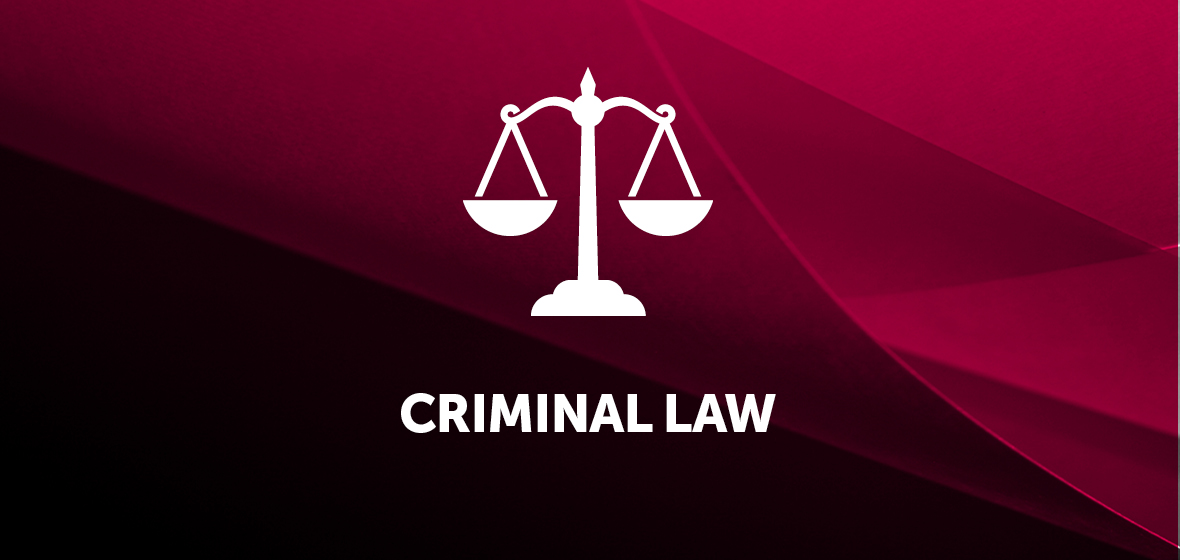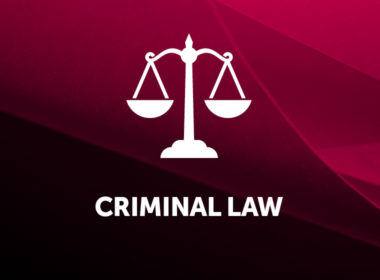McNab v Director of Public Prosecutions (NSW)
[2021] NSWCA 298
District Court appeals – need to establish ‘error’ – meaning of ‘error’ – onus of proof
In this decision the Court of Appeal has held that the District Court appeal jurisdiction requires an appellant to establish ‘error’ – even if it is unhelpful to describe the jurisdiction as being ‘error-based’. More to the point, the error might simply be that the magistrate should not have been convinced of the guilt of the accused.
The applicant was a doctor. He was convicted in the Local Court of sexual offences relating to his conduct during a medical examination: he removed the complainant’s underwear during an examination, and there was (disputed) conversation which was said to establish that this was for a sexual, rather than medical, reason. The Magistrate made findings supportive of the complainant’s credibility, and implicitly rejected the version given by the accused. The applicant appealed to the District Court and was unsuccessful. He then appealed to the Court of Appeal, alleging jurisdictional error, which crystalised as an assertion that the District Court could only assess the credibility of the complainant if it saw and heard her give evidence. The District Court judge having failed to do so in this case (there was no application), the applicant asserted that accepting the complainant as credible amounted to jurisdictional error. However, the bigger question which squarely arose for determination was one which has been a topic of debate for some time: does the District Court appeal jurisdiction require an appellant to establish error? If so, what is the nature of that error? And how does it affect the onus of proof?
Basten and McCallum JJA (with whom Bell P agreed, with separate reasons) observed that an appeal ‘by way of rehearing’ is to be conducted on the documentary record of evidence in the Local Court, with other evidence adduced only by leave, and witnesses not to be recalled unless the criteria in s 19 Crimes (Appeal and Review) Act (‘the Act’) are satisfied (at [58]). An application must be made for the attendance of witnesses (at [62]). In the circumstances, the District Court will not have committed jurisdictional error by not directing the attendance of a witness where (as in this case) there was no application. Moreover, the general principle is that witnesses will not be recalled (at [64]). In carrying out its task of rehearing the matter based on the evidence in the Local Court, there is no prohibition against the District Court judge considering the reasons of the original magistrate (at [73]-[82]).
Against all that background, the applicant asserted that authority holding that the District Court appeal jurisdiction is ‘error-based’ were wrong, in part because even on the appeal the prosecutor should bear the onus of establishing the charge beyond reasonable doubt. However, the plurality in this decision observed that ‘error’ in this context has a particular meaning, and does not place a burden of proof on the appellant in the sense that they must demonstrate a fact to a certain standard (at [84]). Demonstration of error may mean no more than satisfying the District Court judge that the magistrate should not have been satisfied beyond reasonable doubt as to the appellant’s guilt (at [91]). What is required to demonstrate error in this context will depend on whether the asserted error is to be found in the fact-finding exercise, the identification of the law, the application of the law, or in the exercising of a discretionary power (at [88]).
All that said, it is unhelpful to describe the District Court’s appeal jurisdiction as ‘error-based’, although a decision of the Local Court will not be set aside on a District Court appeal unless the District Court judge is satisfied that it was in some respect wrong (at [90]). The plurality also cited, with apparent endorsement for use in District Court appeals, authority from indictable appeals to the effect that if the evidence, on the record itself, contains discrepancies, displays inadequacies, is tainted or otherwise lacks probative force so as to leave a reasonable doubt, then it is only where the original judicial officer’s advantage in seeing and hearing the witnesses can explain those problems that the conviction should not be set aside. This, in their Honours’ view, is not an error-based approach, nor does it depend on whether or not the appeal court obtains assistance from the original judicial officer’s reasons (at [98]-[99]).
The above conclusions were broadly endorsed by Bell P. His Honour pithily described the role of a District Court judge on appeal as being to form his or her own judgment on the facts and to determine, on the basis of the evidence in the Local Court (plus any additional evidence as may be allowed pursuant to the statutory exceptions), whether that evidence was sufficient to demonstrate the appellant’s guilt beyond reasonable doubt. If it was not, error will have been demonstrated.
Similarly, if an error of law is established, that may mean reaching a fresh conclusion in the rehearing, based on the evidence in the Local Court, but untainted by the error at first instance (at [25]).
On one view this decision resolves what has been an ongoing debate: error must be shown. But readers may think that there remains an ongoing tension between, on the one hand, an appellant’s obligation to establish ‘error’ (even where that error might only be that the original decisionmaker just came to the wrong conclusion); and on the other hand the propositions that the appellant has not assumed an ‘onus’ and the prosecution must still prove its case beyond reasonable doubt. Regardless, it is clear that it is insufficient to simply appear on a District Court appeal and require the prosecution to justify the original finding of guilt.
Ahmed v R [2021] NSWCCA 280
Reversed onus of proof – accused’s right to silence – particular need for Azzopardi direction
In this decision the Court of Criminal Appeal has held that in cases where the accused bears an onus in relation to a defence, there is a particular need for the judicial officer to direct themselves that the failure of the accused to give sworn evidence cannot be used as a factor on the question of whether that onus is discharged.
The applicant was found guilty of murdering his wife, following a judge-alone trial. He did not deny that he had stabbed his wife 14 times and then waited until she stopped breathing before calling 000. Rather, at trial he raised the partial defence of substantial impairment. The details of the defence are not presently important except in one respect: s 23A(4) of the Crimes Act provides that the onus is on the accused to prove that he or she is not liable to be convicted of murder as a result of the partial defence, but rather manslaughter.
In a judge-alone trial such as this one, the judge must give themselves all the directions and warnings that would otherwise be given to a jury. The trial judge observed that the accused ‘… elected not to give evidence, despite the onus which fell upon him, to establish the defence which he advanced, on the balance of probabilities.’ Her Honour did observe that the accused had a right to silence which he chose not to exercise (given that on the night he told police what he had done, and gave the 000 operator and two psychiatrists accounts of his actions). That observation was followed immediately by a comment that he ‘chose, however, not to give evidence at the trial, as was also his right.’ The trial judge also observed that none of the accused’s accounts were given on oath, and so were not tested in cross-examination. Ultimately the trial judge found that the partial defence had not been established, and found the accused guilty of murder. He appealed on grounds including that the trial judge erred in her directions relating to the silence of the accused at trial.
Bathurst CJ (with whom Garling and Wright JJ agreed, with additional reasons) drew attention to the well-known decision of Azzopardi v The Queen (2001) 205 CLR 50 (‘Azzopardi’), which provides that if an accused does not give evidence at trial it will almost always be desirable for the judge to warn the jury that the accused’s silence in court is not evidence against them, does not constitute an admission, may not be used to fill gaps in the evidence tendered by the prosecution, and may not be used as a make‑weight in assessing whether the prosecution has proved its case beyond reasonable doubt. The Chief Justice observed that, although not a ‘mandatory’ direction, it will be required in most cases (at [47]). Importantly, his Honour held that such a warning is of particular importance in a case such as the present where the onus lay on the accused to establish the defence. In such a case it seems essential to warn against a path of reasoning that the failure to give evidence was a relevant factor in considering whether the onus had been discharged (at [44]). Although the warning may be implied from the right to silence direction, it depends on the context in which that direction was given (at [48), and in this case it was not able to be implied that the trial judge warned herself of the need to guard against drawing inferences from the failure of the accused to give evidence (at [53]).
As observed by Garling and Wright JJ in their concurring judgment, the case here was not entirely the same as that discussed in Azzopardi; it was more nuanced, because the question was not whether the prosecution had discharged its onus in proving the guilt of the accused, but rather whether the applicant had established the defence on the balance of probabilities (at [88]). In this instance, although the onus of proof for the defence falls on the accused, neither the statute nor common law requires an accused to give evidence in order to discharge that onus (at [89]). It follows that the failure of an accused to give evidence in support of the defence cannot, without more, give rise to an adverse inference on the discharge of the onus of proof (at [90]). Their Honours did leave the door open for a future direction (at least in judge-alone trials) about the differing weight to be afforded unsworn statements when an accused does not give evidence at trial, but declined to decide the issue (at [93]-[96]). In any event, given the complexities in this trial, a clear and explicit direction in accordance with Azzopardi was required (at [97]).
It followed that the appeal was allowed and a new trial was ordered.
This reasoning – especially the observation that an Azzopardi direction is particularly important where an accused bears an onus of establishing a defence – would have just as much application in the Local Court as it does in trials. Potential examples would be ‘goods in custody’ offences, and deemed supply offences, each of which involve a reversed onus.



